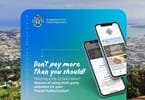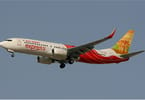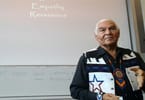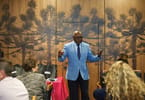One of the most recognized brands for travelers across the world, Lonely Planet, has exclusively revealed how travel brands can position themselves for “App success.”
In an increasingly crowded space, their goal was to find out exactly how travel brands can create an app which your customer will download and repeatedly use. As such, Matthew McCroskey, Head Mobile Product, Lonely Planet, has teamed up with EyeforTravel in association with TDS North America 2014, to identify the three key components which travel brands must use as building blocks when creating an app.
The 3 Secret Components are:
1. The importance of finding your niche in the mobile space.
First of all, as a travel brand, you must find a way of articulating what you have which is unique.
McCroskey explains that what Lonely Planet learned is that consumers wanted all the information – not just a thousand “specially picked” ones. They wanted the full “menu” in order for them to have a fulfilling browsing or research experience. In addition to this, Lonely Planet learned that visual content on mobile is essential, and consumers wanted photos every time, for everything! Long descriptive paragraphs of text were not necesarily important – but – consumers did want access to more information should they require.
2. Use your app to engage your customer throughout all stages of their journey.
Define a simple concept. Make a promise. Keep that promise. Lonely Planet learned that targeting customers in very specific and relevant ways proved hugely successful. Get them involved and engaged the moment they open the app. McCroskey explains: “At first, app abandonment was extremely high, but the theory was then to target the customers who are going to transact” for time and cost efficiency. Essentially, they grab users wherever they may be in that travel cycle. They try to figure out immediately what it is that the consumer wants to do and makes sure that they are getting them to do that.
3. How travel brands can apply the lessons learned from mistakes to build their own successful app.
Never stop improving.
McCroskey is the first to admit Lonely Planet’s mistake: they had 175 different apps, one for every location in the world that they covered. It was great when it was released in 2008, however, the initiative didn’t evolve with the technology and the consumer. This meant that, to their detriment, they were not learning what the customer wanted so they were not evolving with their customers’ demands. In addition, because their content was static, it quickly became outdated.
What they had (which is what they believed they were good at), was not necessarily what the customer wanted. They took a step back and created something new which integrated Lonely Planet’s expertise and unique offering with what the customer actually wanted. Check out Fast Talk by Lonely Planet to see the end product.
Final thought: Listen to your users! Be brave. Use mobile and get it right. Your work is never done.
WHAT TO TAKE AWAY FROM THIS ARTICLE:
- They try to figure out immediately what it is that the consumer wants to do and makes sure that they are getting them to do that.
- In an increasingly crowded space, their goal was to find out exactly how travel brands can create an app which your customer will download and repeatedly use.
- As such, Matthew McCroskey, Head Mobile Product, Lonely Planet, has teamed up with EyeforTravel in association with TDS North America 2014, to identify the three key components which travel brands must use as building blocks when creating an app.






















